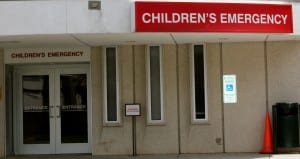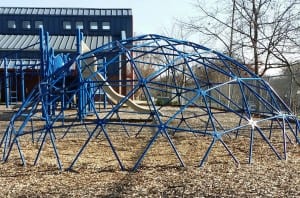ROCK HILL SC CHILD INJURY ATTORNEYS
ROCK HILL CHILD INJURY ATTORNEYS
As all parents know, children grow up too quickly. But while they are young, they move fast and can get hurt in an instant. Like most parents, you worry about your child getting injured and do everything you can to try and protect them. You make sure they wear safety belts in the car and helmets when they ride a bike or skateboard. Sometimes, when you least expect it and despite your best efforts to prevent harm, your children can get injured as a result of someone else’s negligence. And because they are so young and vulnerable, children can be seriously injured in an relatively mild accident. That’s where we come in. We are experienced Rock Hill SC child injury attorneys. Our lawyers are seasoned professional litigators with diverse backgrounds. Our attorneys include a former Registered Nurse (RN) and former insurance defense counsel.
Emergency Room Evaluation
Serious injury can occur in children, and you may not even realize it at first. With any crash or fall, it is important to get your child evaluated as soon as possible at an urgent care center or emergency room. This is especially true anytime there is a “bump” on the head or your child becomes unusually sleepy after even a minor fall. Only after seeing a doctor will you really know if this is a minor accident or something more serious. Head injury can be easy mistaken for something minor and then quickly develop into a more serious, even life threatening, condition. Don’t wait until it is too late. Go to the emergency room immediately and make sure your child is going to be alright. Then we will deal with the legal issues and who is going to be held responsible.
TYPES OF ACCIDENTS
Child Injury in Car Accidents And School Buses
Children are especially vulnerable to automobile accidents when on the road in vehicles. Rock Hill SC is located just inside the South Carolina line and near I-77. A lot of drivers are tired at the end of the day or in a hurry on their way to work in the morning. As a result, these drivers tend to take more risks and drive aggressively. These are the drivers who cause accidents and get people hurt. They are also the ones who never seem to realize or appreciate how dangerous they are on the road and in traffic. In personal cars, child safety seats are legally required. As they get older, booster seats are also mandatory. And then, as we become teenagers and adults, seatbelts are now required in all States. 
Strangely, children remain very vulnerable to school bus accidents while riding on buses because they are still not required to be protected at all. As it was when we were young, there are no seat belts on school buses. School buses travel on rural roads and highways. They have speed reduction devices but often travel in excess of 50 miles per hour. And although buses are still “bright yellow” with lots of flashing lights, they are still too many serious accidents involving cars and trucks. Children are unrestrained and often sustain broken bones and head injuries.
In many cases, children initially report that they are “alright” and may initially decline medical treatment. However, in just a few hours, they can become a critical care patient with previously undetected internal or head injuries. Again, it is imperative to have your child seen and evaluated in every accident just to be sure. You’ll sleep better knowing they are going to be fine.
Other School Accidents and Injury 
Other places children get injured is at the school itself. Playgrounds are great fun, but to safe, all equipment must be properly installed and then regularly checked and properly maintained. Otherwise, “play time” can result in an ambulance ride to the hospital. Loose bolts, rough edges, insufficient mulching underneath swings and other playground equipment can cause cuts, broken bones, and head injury. When schools offer such play areas, they are charged with keeping the playground safe at all times. Schools also need to make sure that older, larger children are not playing dangerous games or sports with smaller, more vulnerable ones.
Certainly, kids will be kids. But schools and teachers have a special duty to children to do everything they can to prevent someone from getting hurt. It is surprising how children are often “left to themselves.” This is how accidents can happen and can happen fast. If schools do not properly monitor children while playing and someone gets injured, the school should be held accountable. By being accountable, maybe schools will take greater care of children in their charge, and injuries can be better prevented in the future.
Bullying
As we have all become more aware, bullying is a real problem that school officials must address and do what they can to stop it. In the old days before the internet, bullying was usually just an older, bigger kid “picking” on someone smaller. Name calling and playing tricks were also common but fairly benign. Today, with the internet and cell phones, students have many more ways to inflict serious, sometimes lifelong harm on fellow children. Internet bullying can be extremely damaging and has even resulted in teens committing suicide. Here also, schools can no longer just ignore bullying. They must take steps to warn, if not stop, bullying between students. It is not enough to simply do nothing. If they try to intervene and the bullying still continues, then schools will be fine. If they take no action, then schools can and should be held to answer.
Dog bites
Sadly, here in Rock Hill SC, another all too common child injury case involves serious dog bites. Simply playing with a small dog and getting “nipped” is not what we’re talking about. Rather, many of our neighbors have large, sometimes aggressive dogs and do not take the proper precautions to ensure everyone is protected and safe. Large dogs require fenced yards and leashes ANY time they are out of the yard. It is simply too dangerous for a large dog to be out and unrestrained.
In many cases, we learn of an ongoing problem in which the neighbors knew “something was going to happen” eventually. That’s why we even look to see if home owner associations (HOA) may be a proper party because many dog owners do not have proper insurance on their dangerous animals. Don’t let this happen to your child. If you see an unrestrained dog outside, call Animal Control to intervene if an owner refuses to be responsible. They can issue a warning citation the first time but then remove a dangerous animal if it continues to pose a threat to everyone. I would rather have an unhappy neighbor than an injured child.
Pools
Neighborhoods and individual homeowners often have pools for summer fun. Pools are great but can be very dangerous. It is common now to see “swim at your own risk” signs in many communities. This may not be sufficient if an HOA is aware that children are swimming unattended by responsible adults. Children are not subject to the same defenses in lawsuits as adults. And again, because children are so vulnerable, they are given special protections in the law. Because neighborhoods with pools are more expensive and assess monthly dues on residents, they should strongly consider hiring a lifeguard or placing adult monitors during the busy times. That is not unreasonable if it prevents serious injury or death to a child.
The same is true with individual homeowners. Pools must be properly fenced and safeguarded while guests are enjoying themselves. If you invite someone over, you become responsible for their safety while there. You have to maintain the pool area from dangerous conditions and watch children to make sure they are being safe. If not, you can be held liable through your homeowner’s insurance.
Attorneys Who Care
 If your child is injured in an accident, no matter how it happens, you should have your legal options reviewed by an experienced child injury law firm. Here in Rock Hill SC, our attorneys have over 80 years combined experience in handling serious accident and injury cases. Our lawyers are aggressive but compassionate accident attorneys. We know and appreciate that this is your child. We want only the best for you and your family and will do everything we can to make sure you are fairly compensated for your loss.
If your child is injured in an accident, no matter how it happens, you should have your legal options reviewed by an experienced child injury law firm. Here in Rock Hill SC, our attorneys have over 80 years combined experience in handling serious accident and injury cases. Our lawyers are aggressive but compassionate accident attorneys. We know and appreciate that this is your child. We want only the best for you and your family and will do everything we can to make sure you are fairly compensated for your loss.
Our lawyers have been inducted into such organizations as the Million Dollar Advocates Forum, National Trial Lawyers Top 100, and Super Lawyers. Attorney Robert J. Reeves of the firm is a former Registered Nurse (RN) and understands how serious injury can be easily missed initially. That’s why he stresses to get your child checked out medically as soon as possible. After we know the full extent of injury, then call us to see how we can help legally. We sincerely hope that you never need us. But we are here and available when you need us – evenings, weekends, and holidays. We would honor an opportunity to meet with you personally to review your case. Call us today at 803-554-4157. Our Rock Hill SC office is located at 2424 India Hook Road, Suite 200.
Be Safe. Get Home.
get help now.
(704) 351- 7979
after hours, evenings, or weekends
Contact Us:
Legal Help Videos
Check out our featured videos for some legal advice from our attorneys!
